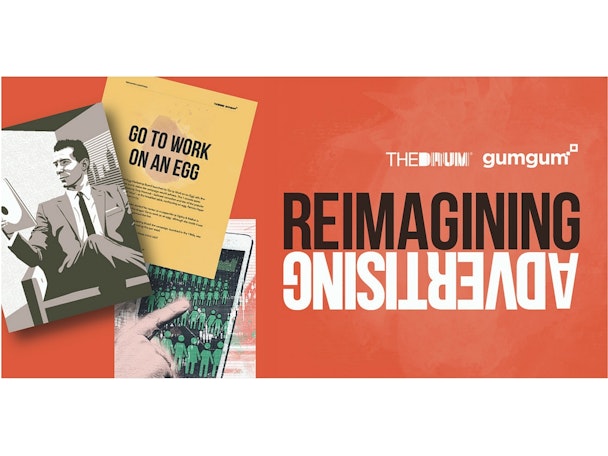Reimagining the Iconic Ads of the Past for Today’s Consumer
What makes an ad iconic? Its ability to resonate across all demographics or generations? Or is an ad capable of capturing widespread imagination because it is somehow inherently iconic? And most important of all, are iconic ads evergreen, or have emerging technologies, consumer behavior and attitudes changed our perception of what constitutes a truly great ad?

reimagine
These are questions of now small importance to brands and agencies. We spend millions each year trying to capture the consumer’s imagination. Sometimes we succeed and sometimes we don’t.
So to answer these questions, we asked some of the UK’s leading advertising executives to consider seven iconic ads from the 1960s, 1970s and 1980s, and to re-imagine them for today’s audiences. We placed no limits on their creativity. We simply asked them to pretend they had received the briefs for two ads, and asked them how they’d respond.
Selecting the iconic ads was a bit of a challenge since there are many greats ones, but we did manage to narrow them down to British Egg Marketing Board’s ‘Go to Work on an Egg', Cadbury’s Smash Mash Martians, the Family Planning Association’s Pregnant Man, the Conservative Party’s ‘Labour isn’t Working’, the Gold Blend romance series, Levi’s Launderette as well as the J. R. Hartley Yellow Pages spot. If you were alive and cognizant at any point from the 1960’s on, you certainly remember all of these ads.
Creativity Set Free
We were delighted to receive highly imaginative ideas, such as the new Pregnant Man campaign offered by Milton Elias, Head of Mobile & Tech Futures at OMD UK. He envisioned smart out-of-home billboards with built-in face and gender recognition software and Microsoft Connect. When men in the right age group walked by, the screen would grab their image, make them pregnant, and display it for all the world to see.
Dom Burch, Founder and Managing Director of What Crisis, suggested an elaborate “Go to work on a Seg” YouTube video that felt exactly like an episode of Not Going Out, the sitcom starring Lee Mack, Sally Bretton and Katy Wix.
Nicole Yershon, Director, Digital Solutions, Ogilvy & Mather Group saw a newly minted Smash Mash campaign as an opportunity to feed the world and engage young people in hunger relief programs. My reimagining wasn’t nearly so noble; I saw it as an opportunity to reposition the instant potatoes as the ultimate hangover food (Got smashed? Get smash!).
In all, our panelists created 21 new campaigns to engage consumers, which we’ve documented in a e-book (click here to download). Some overall themes emerged:
Real-life experiences replace simulated ones
Most participants emphasised the changing role of advertising on the lives of consumers. Once upon a time, consumers accepted simulated narratives; today’s consumers, not so much. People today want real experiences that affect real people. As one participant put it, “People don’t buy into fiction, they buy into reality.” Rather than pretend a man is pregnant find a real one (yes, one exists).
Let consumers drive the storyline
Consumers are no longer passive. Armed with myriad devices and social media outlets, they expect to participate in the storyline offered by an advertiser. To engage the consumer and enable them to affect the narrative, as multiple participants suggested.
Event-driven campaigns
Product launches – such as on Levi’s 501 Classic – should be major cultural events, with plenty of content assets that consumers can personalise and distribute themselves. Traditional media outlets need to make way; YouTube, Snapchat, and Vine are now essential distribution channels.
Deeply personalise campaigns
Our digital lifestyles generate huge amounts of data, and this data can be used to create deeply personalised advertising experiences, as suggested by multiple participants. Make it easy for consumers to see themselves in a particular situation, or to challenge prevailing wisdom. If you’re going to make a claim, let the consumer test it.
Respond to the zeitgeist
For ads to resonate, they must be relevant to the here and now. Many of our participants recommended using real-time data feeds and world events to dictate an ad’s narrative, including weather, sporting events, even data streaming from the NASA Opportunity Rover on Mars! Consumers live in a fast-paced world, and advertisers need to keep up with them.
Special thanks to all those who participated in our reimaging advertising project: Ross Sleight, Elias Milton, Caspar Schlickum, Nicolas Roope, Gav Thompson, Dom Burch, Mike Yershon, Nicole Yearshon (father and daughter), Malcolm Poynton, Jon Wilkins and Nicky Bullard.
They’ve taught us that for today’s consumer, advertising is entertainment.
To read all of the campaign re-imaginings, click here to download the e-book.
Content by The Drum Network member:

GumGum
GumGum is a contextual-first global advertising technology company that captures people’s attention, without the use of personal data. We believe that a digital...
Find out more
